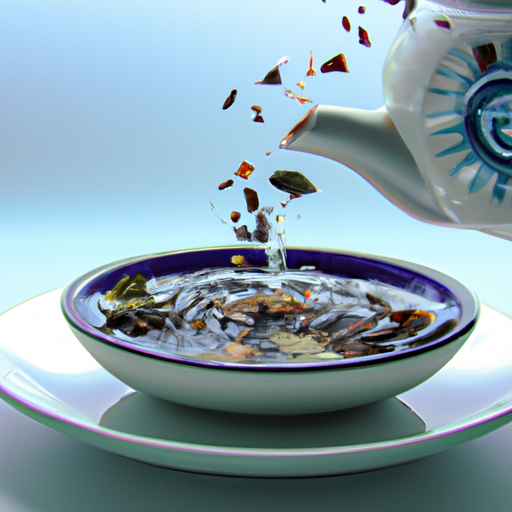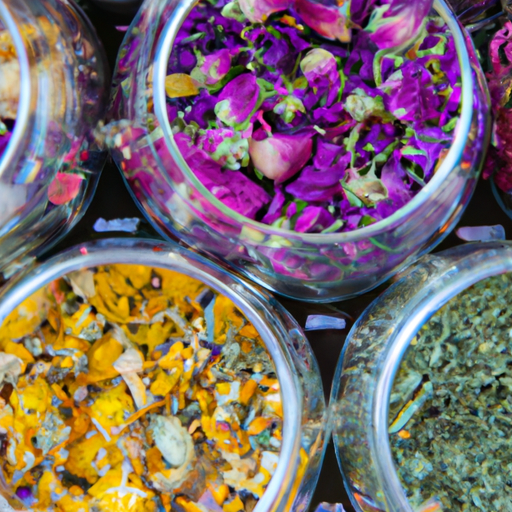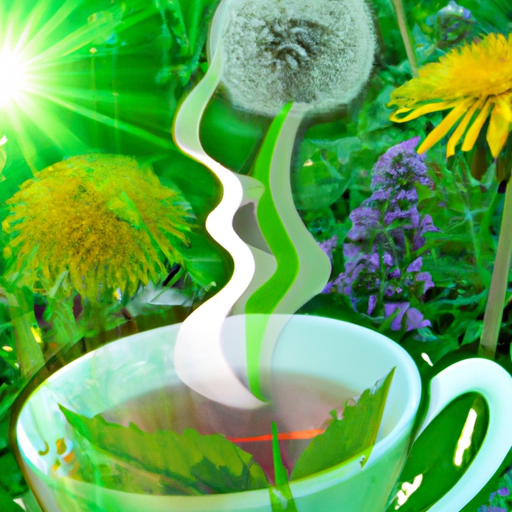Brewing herbal tea is akin to a gentle ballet of flavors and scents, a harmonious blend of nature in a mug. Being a tea lover, I have grown to value the skill of brewing and the significance of timing.
Each herbal tea is unique, with its own characteristics and benefits. But how long should I steep my herbal tea? This question has puzzled many tea lovers, myself included. In this article, I will guide you through the intricate world of herbal tea steeping, sharing my knowledge and insights.
From understanding the different types of herbal tea to considering the flavor profile and intensity, we will explore the factors that determine the perfect steeping time. So grab your favorite herbal blend, and let’s embark on a tea-steeping adventure together. Get ready to discover the secrets to brewing a cup of herbal tea that will tantalize your taste buds and soothe your soul.
Key Takeaways
- Herbal tea steeping time generally ranges from 5 to 7 minutes, but some teas may require longer steeping times.
- Consider the flavor profile and intensity of the tea when determining the steeping time.
- Guidance on steeping times and temperatures can be found on tea packaging or instructions.
- Experimenting with steeping times can lead to discovering new flavors and aromas in herbal teas.
Understand the Different Types of Herbal Tea
So, when it comes to steeping your herbal tea, it’s important to understand the different types and their unique flavors. Different brewing methods can yield different results, so knowing which method works best for each type of herbal tea is key.
Whether you prefer loose leaf or tea bags, the brewing time can vary. Generally, for most herbal teas, a good rule of thumb is to steep them for about 5 to 7 minutes. This allows the flavors and health benefits of the herbs to infuse into the water. However, some herbal teas, like chamomile or lavender, may require a longer steeping time of around 10 minutes to fully release their soothing properties.
Consider the flavor profile and intensity of the herbal tea to determine the perfect steeping time.
Now, let’s move on to the next section about considering the flavor profile and intensity.
Consider the Flavor Profile and Intensity
When brewing herbal tea, it’s essential to gauge the flavor profile and intensity before deciding on the steeping time. Steeping techniques can enhance the flavors of herbal tea and create a more enjoyable experience. To maximize the health benefits, factors such as water temperature, steeping time, and the amount of tea used should be considered. For a stronger flavor, a longer steeping time is generally recommended, but it’s important to avoid oversteeping as it can result in a bitter taste. On the other hand, a shorter steeping time can yield a lighter and more delicate flavor. To help you visualize the different flavor profiles, here’s a table showcasing the intensity and characteristics of various herbal teas:
| Tea Type | Flavor Profile | Intensity |
|---|---|---|
| Chamomile | Floral, Relaxing | Mild |
| Peppermint | Minty, Refreshing | Medium |
| Hibiscus | Tart, Fruity | Strong |
| Ginger | Spicy, Warming | Bold |
Considering these factors can help you make an informed decision on the steeping time that suits your preference. It’s important to note that reading the tea packaging or instructions can provide additional guidance on steeping times and temperatures.
Read the Tea Packaging or Instructions
By checking the packaging or instructions, you can uncover valuable insights and guidance on how to brew your chosen herbal tea to perfection.
Many herbal teas come with specific instructions on steeping time and water temperature. These instructions are crucial in bringing out the best flavor and aroma from the tea leaves.
Additionally, some teas may have specific recommendations for using organic herbal tea options. Choosing organic teas can be important for those who value sustainability and want to avoid pesticides and artificial additives.
Another beneficial option is using loose leaf herbal tea, which allows the tea leaves to expand fully during steeping, resulting in a more flavorful brew.
So, before you start steeping, take a moment to read the packaging or instructions to ensure you are making the most of your herbal tea experience.
Now, let’s move on to the next section and explore how to experiment with steeping times.
Experiment with Steeping Times
Discover the magic of unlocking new depths of flavor and aroma by playing with the dance of time and tea. Experimenting with steeping times can lead to surprising and delightful results.
Each herbal tea is unique, and finding the optimal steeping time can enhance its taste and benefits. Start by steeping the tea for the recommended time mentioned on the packaging or instructions. Then, gradually increase or decrease the steeping time in small increments and taste the tea after each adjustment. Take note of the flavors and aromas that emerge at different steeping times.
You might find that a longer steeping time brings out richer flavors, or a shorter steeping time preserves the delicate notes. Remember, the perfect steeping time is a personal preference, so trust your taste buds.
As we move on to the next section about using the right water temperature, let’s dive deeper into the art of brewing herbal tea.
Use the Right Water Temperature
To truly elevate your tea experience, ensure you’re using the perfect water temperature. Choosing the right water temperature for herbal tea is crucial as it directly impacts the flavor, aroma, and overall quality of your brew. The importance of water temperature in herbal tea brewing cannot be overstated. Different temperatures bring out different characteristics in the tea leaves, allowing you to fully appreciate their natural flavors and aromas.
To help you understand the ideal water temperature for different herbal teas, here’s a table that shows the recommended temperatures for a few popular varieties:
| Herbal Tea | Water Temperature |
|---|---|
| Chamomile | 205°F (96°C) |
| Peppermint | 195°F (90°C) |
| Rooibos | 208°F (98°C) |
By using the right water temperature, you can unlock the full potential of your herbal tea. Now that you know the importance of water temperature, let’s move on to the next step: taking note of the steeping vessel.
Take Note of the Steeping Vessel
Now that we’ve covered the importance of water temperature, let’s pay attention to the vessel we use for steeping our tea. Choosing the right teapot is crucial in ensuring a proper infusion of flavors. The material of the teapot can greatly impact the taste and aroma of the herbal tea.
Clay teapots are often preferred as they absorb and retain heat, allowing for a more even steep. Glass teapots, on the other hand, allow you to visually enjoy the vibrant colors of the tea as it brews. Additionally, the size of the teapot should be considered. A smaller teapot is ideal for single servings, while a larger one is suitable for multiple servings or when entertaining guests.
The steeping vessel plays a vital role in the overall tea experience, so choose wisely.
Transitioning into the next section, let’s now explore the importance of trusting your taste buds.
Trust Your Taste Buds
Your taste buds hold the key to unlocking the full potential of your tea experience. When it comes to steeping herbal tea, trusting your taste buds is crucial. Everyone’s palate is unique, and what may be appealing to one person may not be to another. Steeping time is a matter of personal preference and intuition. To help you find the perfect steeping time for your herbal tea, consider using a 3-column and 3-row table:
| Tea Type | Steeping Time | Taste |
|---|---|---|
| Chamomile | 5 minutes | Mild |
| Peppermint | 3 minutes | Refreshing |
| Hibiscus | 7 minutes | Tart |
By experimenting with different steeping times, you can discover the flavor profile that suits your taste buds best. Trust your intuition and adjust the steeping time to achieve the desired strength and taste. Remember, the beauty of herbal tea lies in its versatility, so don’t be afraid to explore and find your perfect cup.
Frequently Asked Questions
Can I mix different types of herbal tea together when steeping?
Yes, you can mix different types of herbal tea together when steeping. This allows you to create unique flavor combinations and enjoy the benefits of multiple herbs in one cup. Steeping herbal tea brings out their natural flavors and beneficial compounds.
How do I know if I am using the right water temperature for steeping herbal tea?
To choose the right water temperature for steeping herbal tea, consider the type of tea. Delicate herbal teas like chamomile and mint require lower temperatures around 175°F, while robust teas like black and ginger can handle boiling water at 212°F. Achieving the perfect flavor profile relies on this crucial step.
Can I reuse the herbal tea leaves for a second steeping?
Yes, you can reuse herbal tea leaves for a second steeping. However, the steeping time may need to be adjusted as the flavor may be weaker. Experiment with shorter steeping times to achieve desired strength.
Is it necessary to use a specific type of vessel for steeping herbal tea?
When steeping herbal tea, it is important to use a specific type of vessel. The vessel should be made of a material that does not alter the flavor of the tea and allows for proper infusion.
How can I enhance the flavor of my herbal tea without adding sweeteners or additives?
To enhance the flavor of herbal tea without sweeteners or additives, I recommend exploring natural flavoring alternatives. Infuse your tea with fresh herbs, citrus zest, or spices like cinnamon or ginger for a delightful and aromatic experience.
Conclusion
In conclusion, steeping herbal tea is not an exact science, but it’s a personal preference. Experimenting with different steeping times, water temperatures, and vessels can help you find the perfect cup of tea that suits your taste buds.
Interestingly, a study conducted by the University of Maryland Medical Center found that certain herbal teas, like chamomile, can help reduce anxiety and promote better sleep. So, not only can you enjoy a soothing cup of herbal tea, but it may also have potential health benefits.
Cheers to finding your perfect steeping time!










